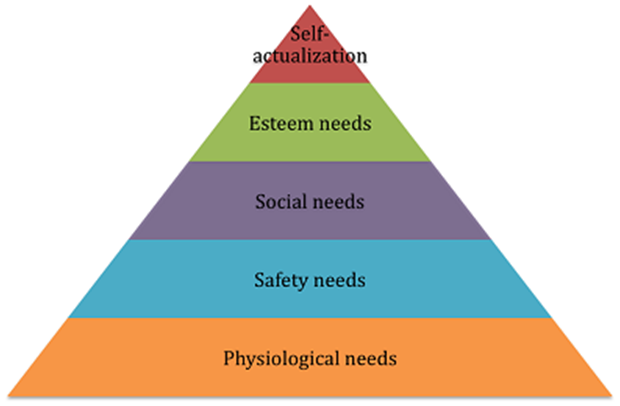Maslow’s Hierarchy of Needs Revisited
The theoretical framework of Maslow’s Hierarchy of Needs (1943) is considered by many to be the most substantial theory in the area of human motivation. Maslow (1943) categorises human needs into the five different levels and states that are evolved in a sequential manner.
Maslow’s Hierarchy of Needs
Psychological needs include basic human needs that are necessary to sustain life such as food, clothing, sleeping etc. Satisfaction of psychological needs in individual results to an emergence of safety needs that include being free of fear or deprivation of basic needs.
The next level of needs is social needs that follow after the satisfaction of safety needs. Namely, social needs relate to the sense of acceptance by various groups. Esteem needs, emerging in the next stage “motivates a person to contribute his or her best to the efforts of the group in return for the numerous forms of reward that recognition can assume” (Montana and Charnov, 2008, p.239).
Adequate satisfaction of esteem needs makes self-actualisation needs predominant. This stage of need is closely associated with maximising an individual’s potential regardless of its nature. The practical implications of “Hierarchy of Needs” are that managers must adopt an individual approach when motivating their subordinates addressing the immediate needs of each individual employee.
According Maslow (1943) in their practices organisational managers need to address more immediate needs of employees in order to achieve the highest level of motivation. In other words, trying to appeal to self-esteem needs of an employee that has not satisfied his belonging needs is not the best approach in terms of achieving a high level of employee motivation.
References
Maslow, A.H. (1943) “The Theory of Human Motivation” Psychological Review, 50(4)
Montana, P.J. & Charnov, B.H. (2008) “Management” Barron’s

